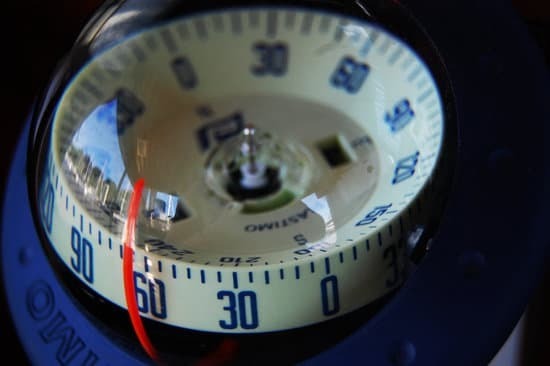The history of the compass dates back more than 2,000 years, with its invention during the Han Dynasty in China between the 2nd century BC and 1st century AD. The first compasses were made of lodestone, a naturally magnetized mineral. These early compasses had a magnetic needle or card that could rotate freely and, when positioned horizontally, would align itself with the Earth's magnetic field, pointing to the Magnetic North-South direction. This remarkable device revolutionized navigation and played a pivotal role in shaping the course of human history.

The Birth of the Compass in Ancient China
The inception of the compass can be traced to ancient China, where it emerged as a crucial tool for early explorers and sailors. The compass's evolution in history, from its humble beginnings in China, is a testament to human ingenuity. The compass's magnetic properties remained a subject of scientific inquiry for generations, inspiring scholars and adventurers alike to unlock its secrets. Navigators and scientists alike were drawn to its mystical attraction, fueling the pursuit of knowledge and exploration that has shaped our world. This remarkable instrument, born of ancient Chinese ingenuity, stands as a powerful symbol of humanity's ceaseless quest to understand and harness the forces of nature.These pioneering compasses were fashioned from lodestone, a naturally occurring magnetic mineral. The magnetic properties of lodestone were harnessed to create a device that could reliably indicate direction, regardless of the time of day or weather conditions. This remarkable device revolutionized navigation and played a pivotal role in shaping the course of human history.
The Magnetic Spoon: An Innovative Design
The Chinese navigational compasses that emerged during the Song Dynasty had a unique design, with the lodestone fashioned into a shape that can best be described as a spoon. This design innovation allowed for more accurate navigation, as it minimized the friction between the magnetic needle and its housing. With this improved compass in hand, European mariners were better equipped to sail vast expanses of open seas, marking the beginning of the Age of Discovery between the 15th and 18th centuries.
Understanding Magnetic Variation
During the 15th century, Mariners had to reckon with the magnetic deviation on their compasses, but rather to some nearby point. In Europe, compass needles pointed slightly east of true north. This phenomenon, known as magnetic variation, posed challenges for navigation, especially during long sea voyages.
The British Contribution
To address the issue of magnetic variation, British navigators adopted conventional meridional compasses. These compasses were designed so that the north on the compass dial aligned with the "needle north" when the ship passed a certain point in Cornwall, England. This ingenious solution helped mariners navigate more accurately and contributed to the success of British exploration and trade routes.
Technical Advancements and Expansion
Over the centuries, various technical improvements were made to the magnetic compass, many of which were pioneered by the British, who relied heavily on navigational devices due to their vast empire and naval power. By the 13th century, the compass needle had been mounted upon a pin standing on the bottom of the compass bowl. Initially, only north and south were marked on the bowl, but then the other 30 principal points of direction were filled in, further enhancing navigational precision.
The Triumph of Liquid Compasses
WhileTime-honored sailor's compasses, they were eventually made obsolete by the end of the 19th century with the advent of liquid compasses. Liquid compasses, filled with a special damping fluid, provided even greater stability and accuracy. These advancements in compass technology revolutionized navigation and contributed to the further exploration and mapping of the world's oceans.
Continued Advancements in Compass Technology
As the world continued to evolve, so did compass technology. In the 19th century, innovations such as the gimbal-mounted compass were introduced, providing stability even in rough seas. This innovation ensured that the compass remained level regardless of the ship's movements, a crucial development for maritime navigation.
The Influence of Compass on Exploration and Trade
The compass's impact on exploration and trade cannot be overstated. During the Age of Discovery, European explorers armed with compasses ventured into uncharted waters, seeking new trade routes and territories. Christopher Columbus, for example, relied on the compass during his famous voyage to the Americas in 1492. The compass provided a reliable reference point in the vast expanse of the ocean, allowing explorers to maintain their course and return safely to their home ports.
Navigating the British Empire
The British Empire, at its zenith in the 19th century, owed much of its success to advancements in navigational technology, particularly the compass. British naval power was unparalleled, and their mastery of navigation using compasses allowed them to control vast colonial territories and establish trade networks across the globe. The compass was not just a tool for exploration but a symbol of British maritime prowess.
Compass in Modern Times
Today, the compass has evolved further with the integration of modern technology. While traditional magnetic compasses are still widely used, they are often complemented by electronic navigation systems, including GPS. These systems provide even greater accuracy and functionality, ensuring that ships, aircraft, and even hikers can navigate with precision.
The compass has also found its place in various industries beyond navigation. It is used in geology, surveying, and engineering for orientation and direction measurement. In addition to its practical applications, the compass remains a symbol of adventure and exploration, serving as a reminder of the countless journeys and discoveries made possible by this simple yet ingenious device.
In Conclusion
The history of the compass is a story of human innovation and the pursuit of knowledge. From its origins in ancient China to its pivotal role in the Age of Discovery and its continued importance in modern navigation, the compass has left an indelible mark on our world. It has not only facilitated exploration and trade but also symbolized the enduring human spirit of curiosity and adventure. As we look to the future, the compass will undoubtedly continue to guide us on our journeys, both literal and metaphorical, as we navigate the uncharted territories of the world and beyond.

